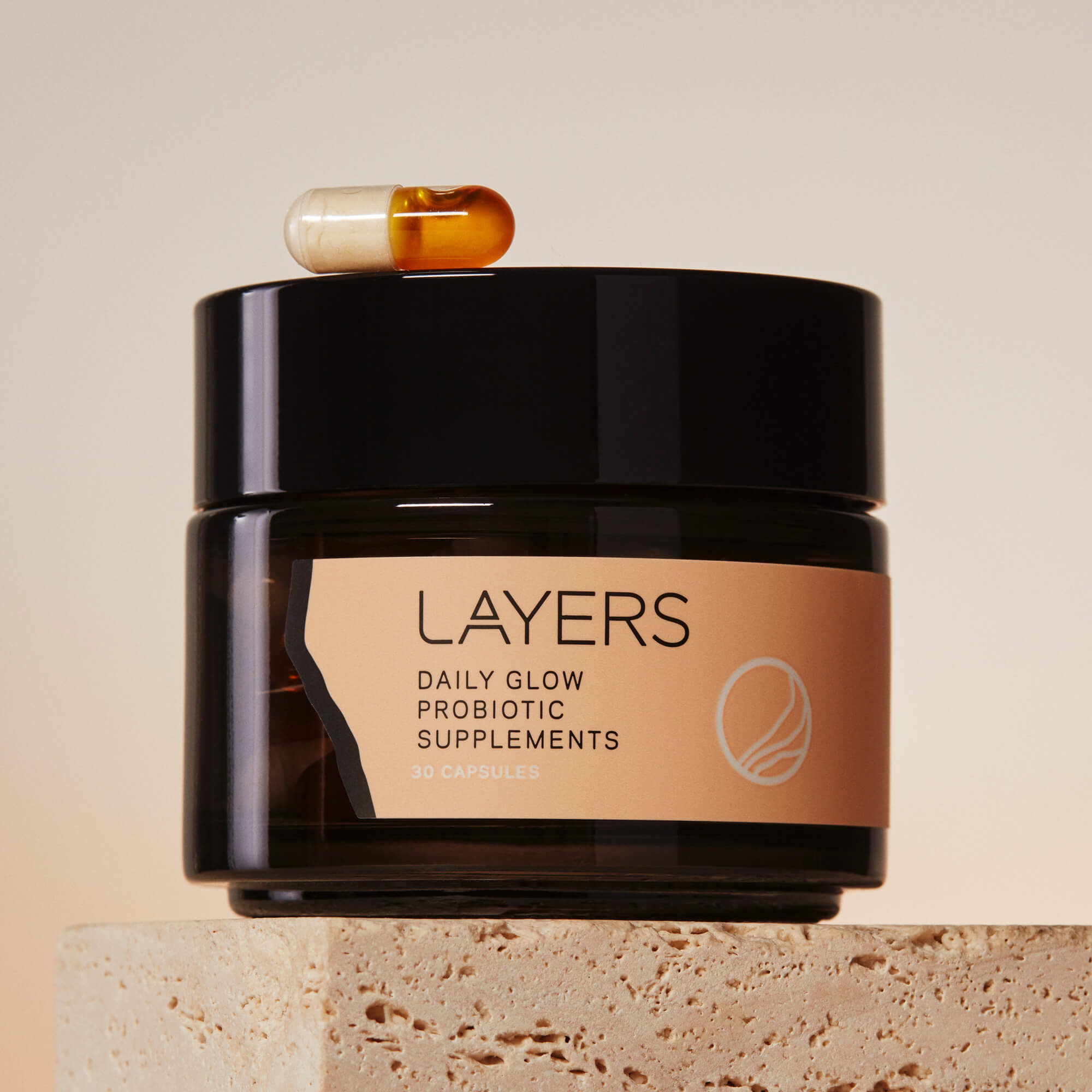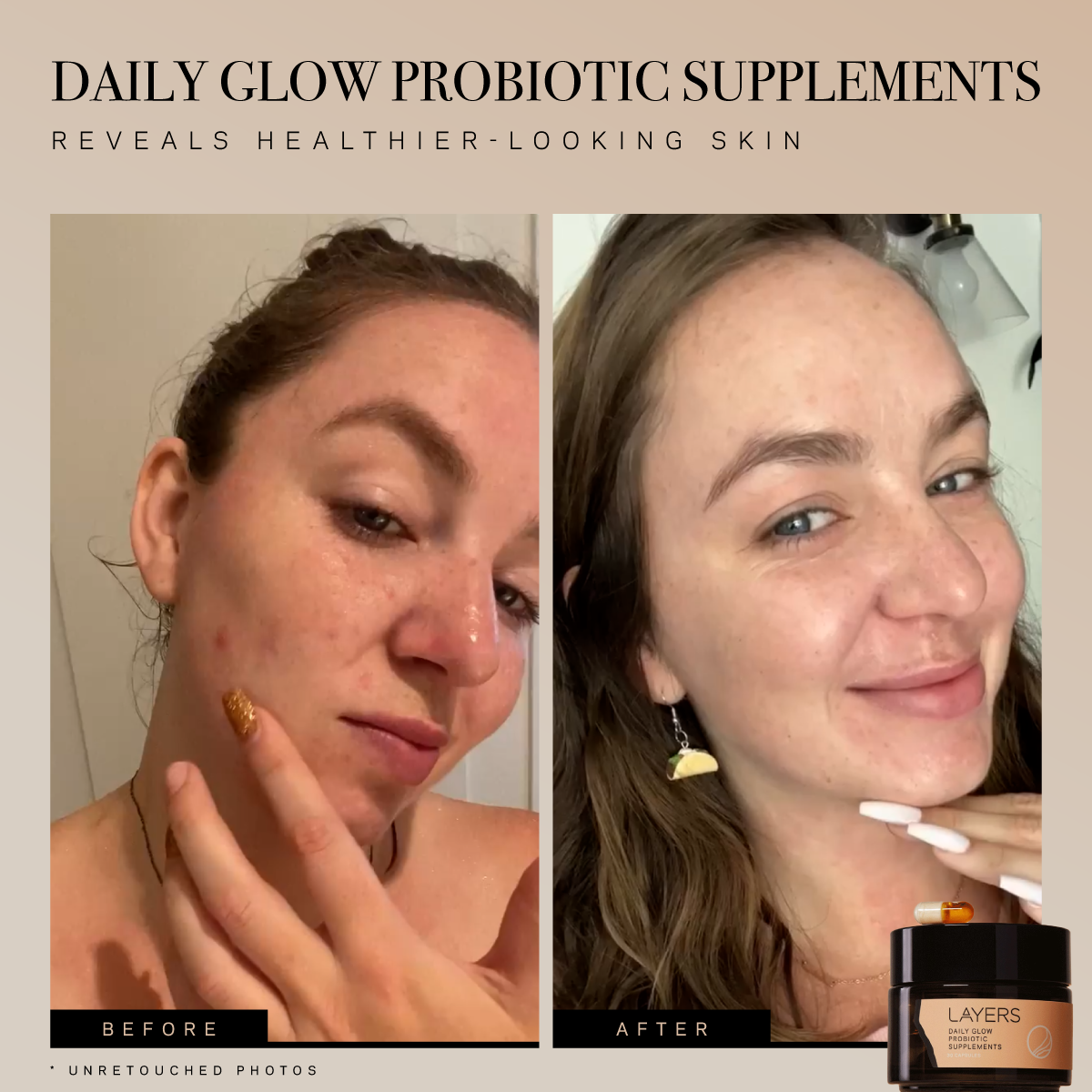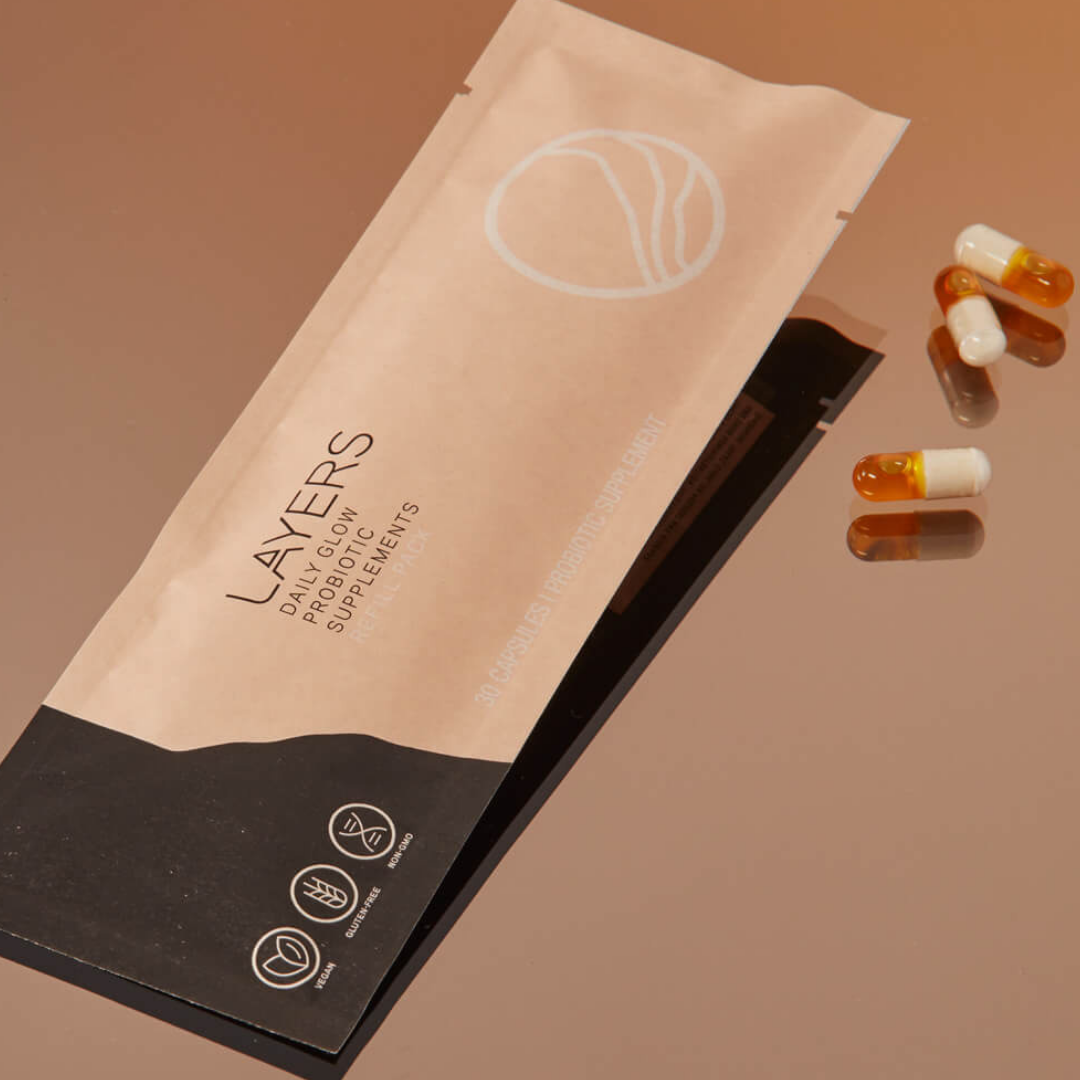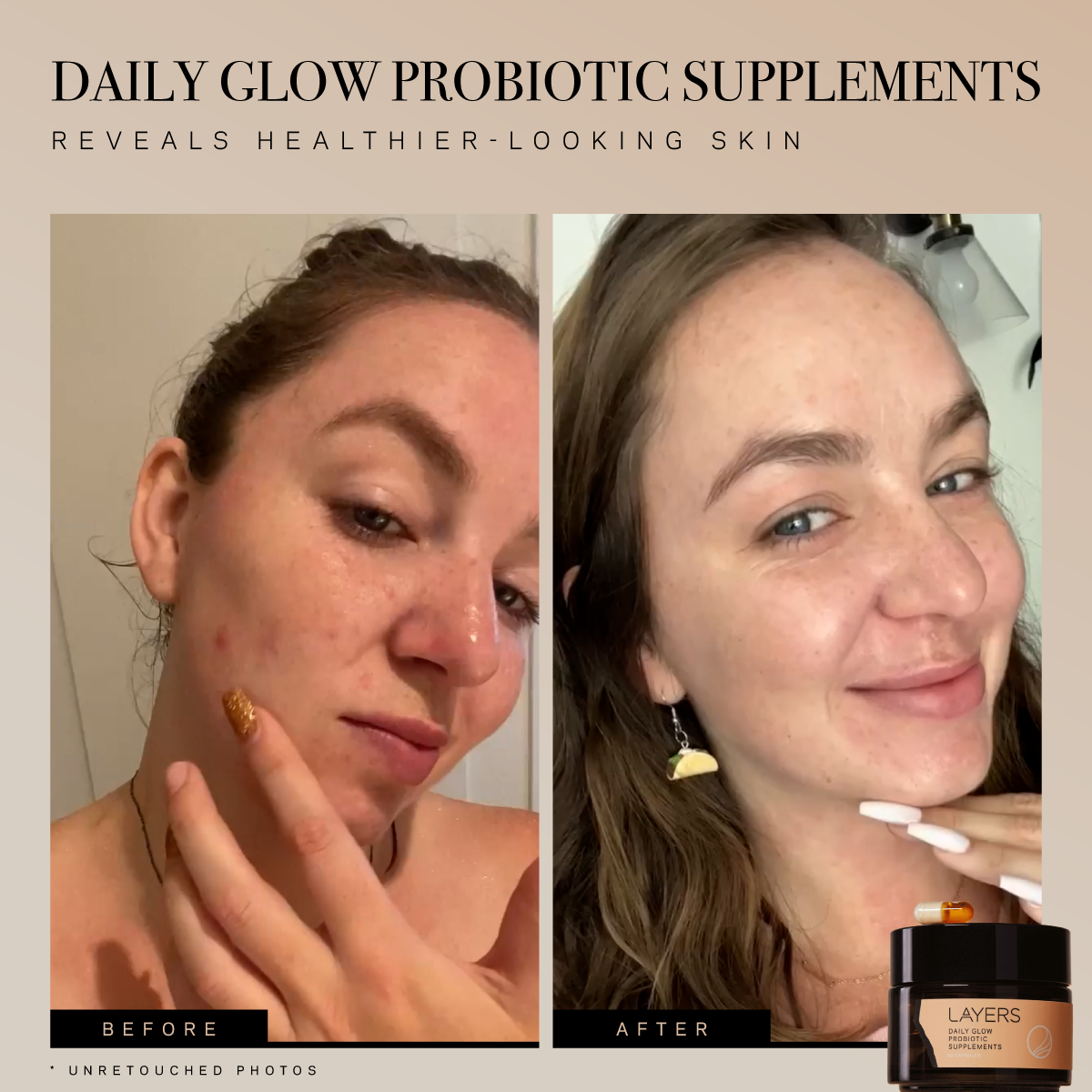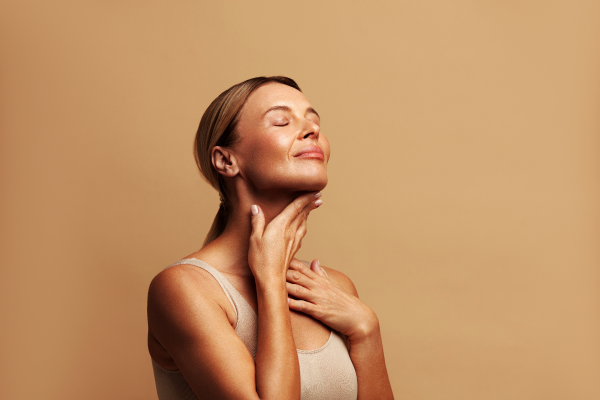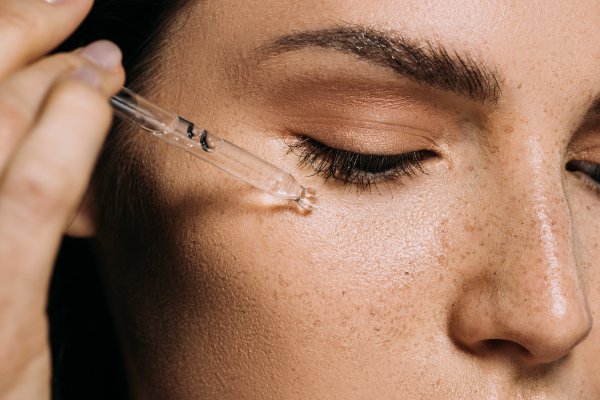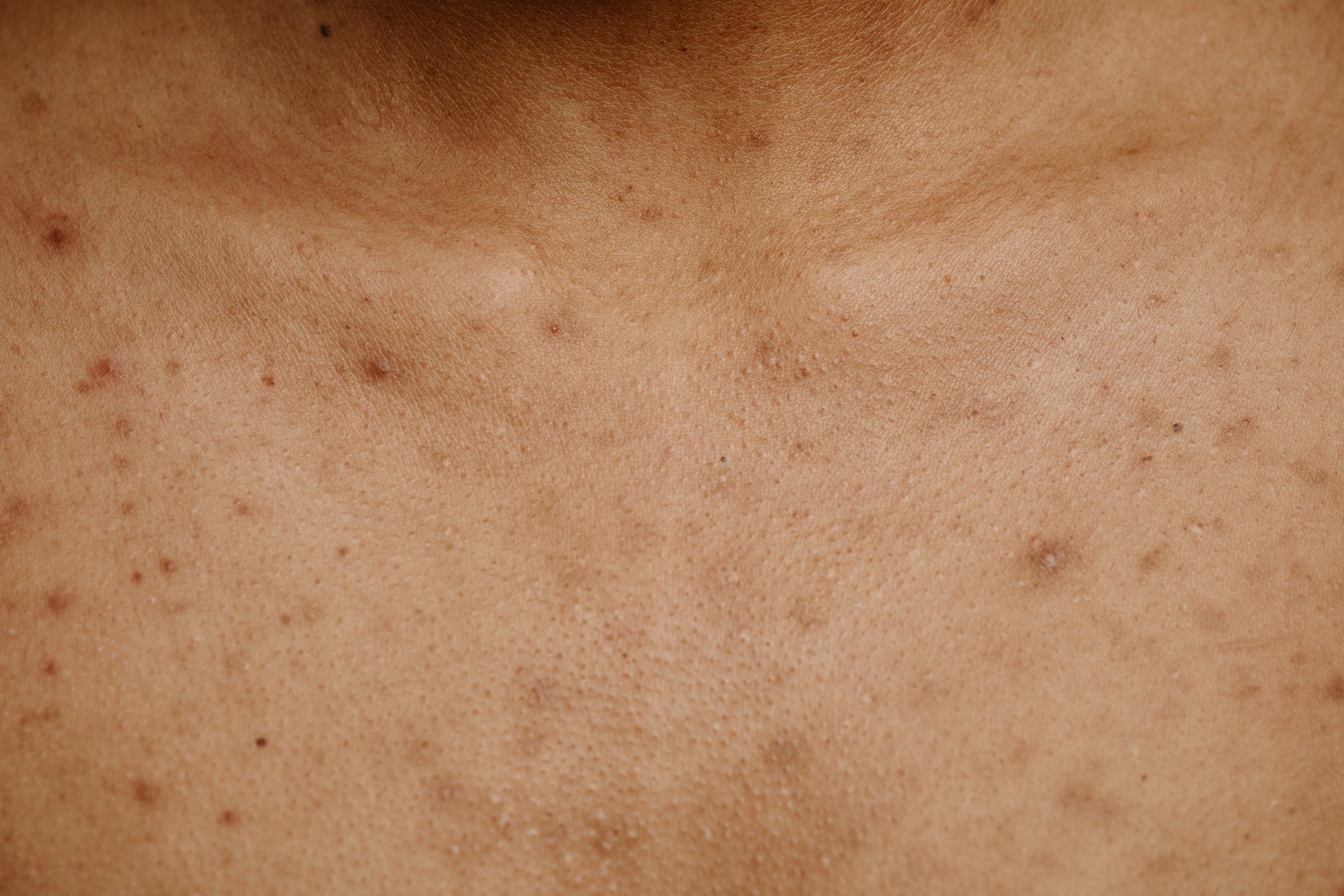Seasonal skincare advice for summer-ready skin
When it comes to great skin, strong protection is key. UV radiation is one of the most prominent stressors of our skin microbiome, so doing what we can to strengthen and protect it is the most important aspect of skincare. We’ve put together 3 pro-tips for summer skin protection that will help you and your microbiome weather the season better and brighter, from the inside out.
SUMMER SKINCARE TIP #1: USE A GOOD QUALITY SUNSCREEN EVERYDAY
Not all sunscreens are created equal, so knowing what to look for is the only path to true protection. So, let’s get to know our rays and then understand how to protect our skin in their presence.
There are UVA rays and UVB rays, and overexposure to both can lead to cancer. According to the American Academy of Dermatology, the differences between the two are as follows:
-
UVA: the type that causes wrinkles and speeds up signs of aging, can pass through windows
-
UVB: the type that causes sunburns, is blocked by windows
The AAD also advises you to reapply sunscreen every 2 hours. This is recommended because exposure to sun breaks down the SPF, reducing the UV barrier on your skin. This means that protection doesn’t decrease according to time, but according to sun exposure. A study published in the Journal of the American Academy of Dermatology concluded that applying sunscreen 15-30 minutes pre-exposure and again at 15-30 minutes after the first exposure yielded the best protection.
Which SPF is best to use?
Dermatologists recommend sunscreen with an SPF of 30 or higher. An SPF 30 will block 97 percent of the sun's UVB rays. Higher-number SPFs can make for a stronger skin fortress, but they protect you for the same amount of time- so you still need to reapply. Skincare products can reasonably tout a 50 SPF, but there is currently no evidence that SPFs higher than 50 protect your skin to a higher degree. No sunscreen can block 100 percent of the sun's UVB rays, so if you’re outside, no matter the weather, you’re exposed.
While regular reapplication is the best practice, it may not always be realistic. So if you can’t reapply every half hour, then reapply especially after strenuous activity that may have caused your sunscreen to sweat away or be wiped off. After a swim, a run, or playing sports, it’s a good idea to give yourself a fresh layer of protection. You can also find setting sprays that contain SPF and spritz your face over your makeup throughout the day.
Another way to add a level of protection is to accessorize! Big, statement-making sunglasses and wide-brimmed hats are not only fun fashion accessories, but they are also offering your skin some shade. So slather on that SPF and go find yourself a new summer hat!
SUMMER SKINCARE TIP #2: STRENGTHEN YOUR MICROBIOME
A healthy microbiome helps strengthen your skin barrier and protect you from UV rays. In fact, up to 80% of the most visible signs of aging, including wrinkles and dryness, are linked to sun exposure. But your microbiome is here to help!
Studies have shown that the microbiome doesn’t only boost your protection, but it can actually even help mitigate the negative effects of sun exposure, possibly even suppressing the growth of tumors. The prebiotic inulin, which you can find in our Balancing Milky Cleanser, induces Bifidobacterium, which has been shown in studies to inhibit the growth of melanoma.
Using daily oral and topical probiotics can help replenish your gut and skin microflora, adding beneficial bacteria that will help your microbiome thrive. The probiotic strain Lactobacillus Plantarum has been shown in studies to reverse the signs of photoaging, and Lactobacillus Rhamnosus was shown to reduce the number of UV-induced skin tumors in laboratory studies. Both are primary ingredients in our Daily Glow Probiotic Supplements.
SUMMER SKINCARE TIP #3: EAT BREAKFAST FOODS THAT PROTECT
If you’re a foodie, we’ve got good news. Skinfood is a real thing. Incorporating a few specific plant-based foods can offer a tasty form of skin protection. Why breakfast? Because it turns out that our bodies have a “skin clock”. Studies have shown that what we eat for breakfast sets the tone for our enzyme production, which counts on a regular cycle of replenishment to be the most effective. According to Healthline, you can add these to your morning routine for better protection:
-
Blueberries: powerful sources of antioxidants and vitamin C
-
Tomatoes and Watermelon: both are high in lycopene, which absorbs and protects against UV rays
-
Nuts & Seeds: walnuts and seeds like chia, hemp, and flax all contain Omega-3 fatty acids which are anti-inflammatory and help your skin maintain its natural pH
-
Carrots: contain vitamin A which naturally protects skin from UV rays
-
Leafy Greens: contain lutein and zeaxanthin, antioxidants that protect you against wrinkling, sun damage, and even skin cancer
-
Green Tea: contains the flavonoid EGCG, which studies show can reduce UV damage and prevent your body from decreasing collagen production
-
Cauliflower: contains histadine, an alpha-amino acid that stimulates the production of urocanic acid, which absorbs UV radiation
We all love the feeling of sun-kissed skin, but it’s important to always remember that there invisible rays that can cause long-term damage. Starting with the basic building blocks of a good diet and a powerful probiotic skincare routine go a long way towards protecting you from damaging UV rays. Packing in antioxidant-rich, skin-protective foods and taking a once-a-day probiotic supplement is a great way to start the day. And remember to keep up your sunscreen habit throughout the year, not just during the summer months. Twenty years from now, you’ll be glad you did!

